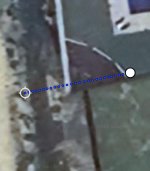Veebs
Mame
Specifically I’m talking about loblolly, but I’ve been working a number of pines in my back yard in crappy clay, and I’ve already seen one of my favorite pines has roots running for the hills, so I’m nervous about being able to collect it.
However, I could easily set up a ground layering. Is this likely to be met with success with pines?
(I’m familiar with the tactic of working the roots while still in the ground to try to promote fine fibrous roots near the trunk, and I’m already trying to do this but I’m looking for alternatives as the soil quality presents challenges.)
However, I could easily set up a ground layering. Is this likely to be met with success with pines?
(I’m familiar with the tactic of working the roots while still in the ground to try to promote fine fibrous roots near the trunk, and I’m already trying to do this but I’m looking for alternatives as the soil quality presents challenges.)

